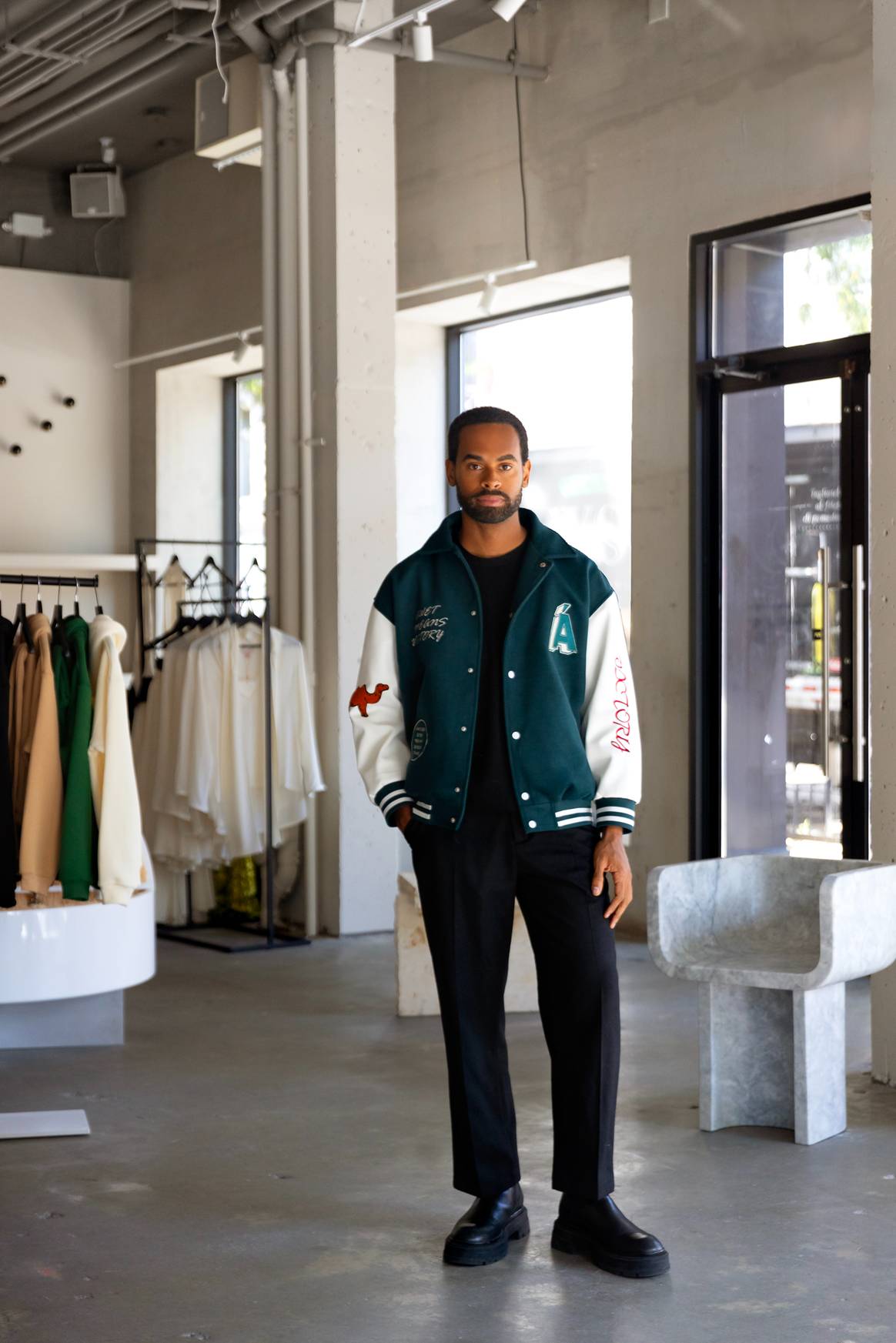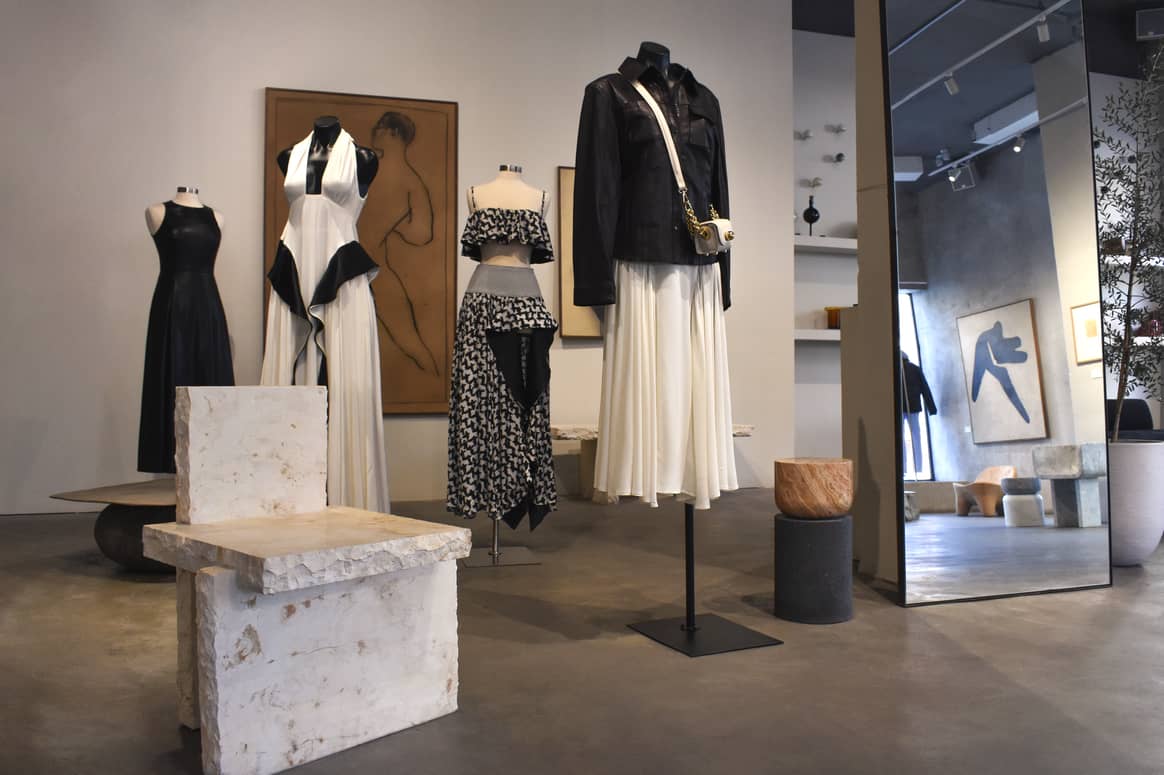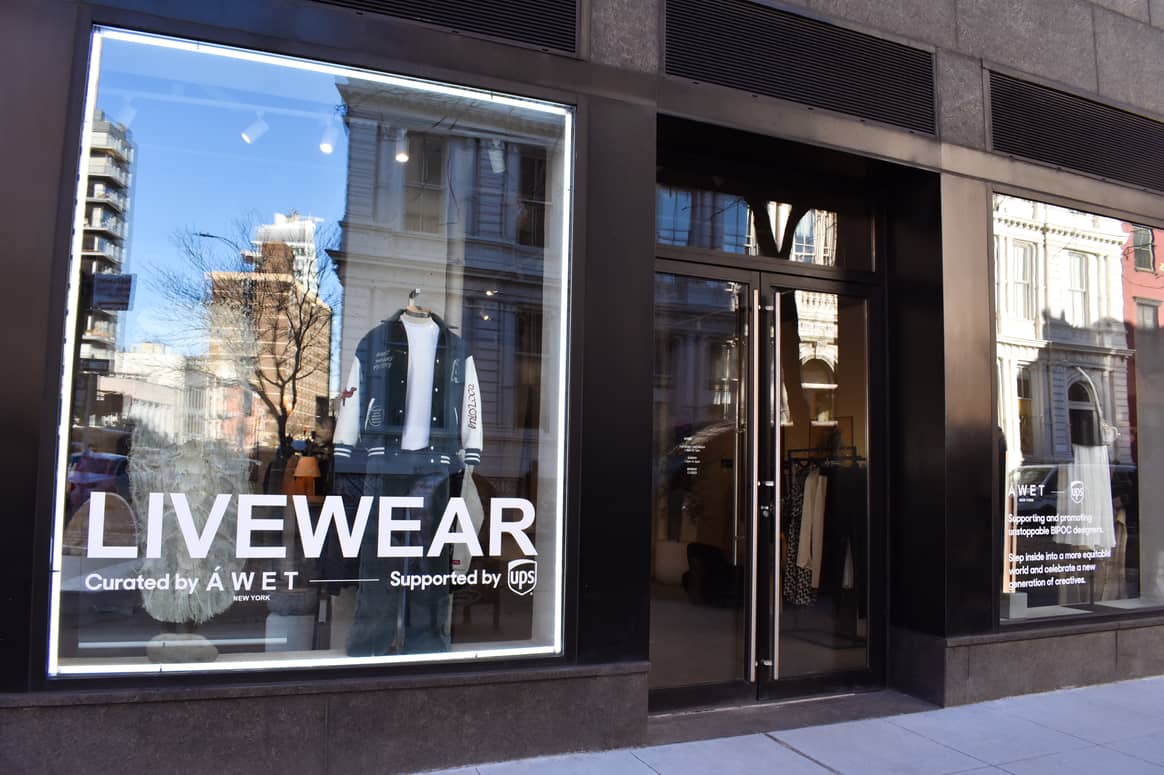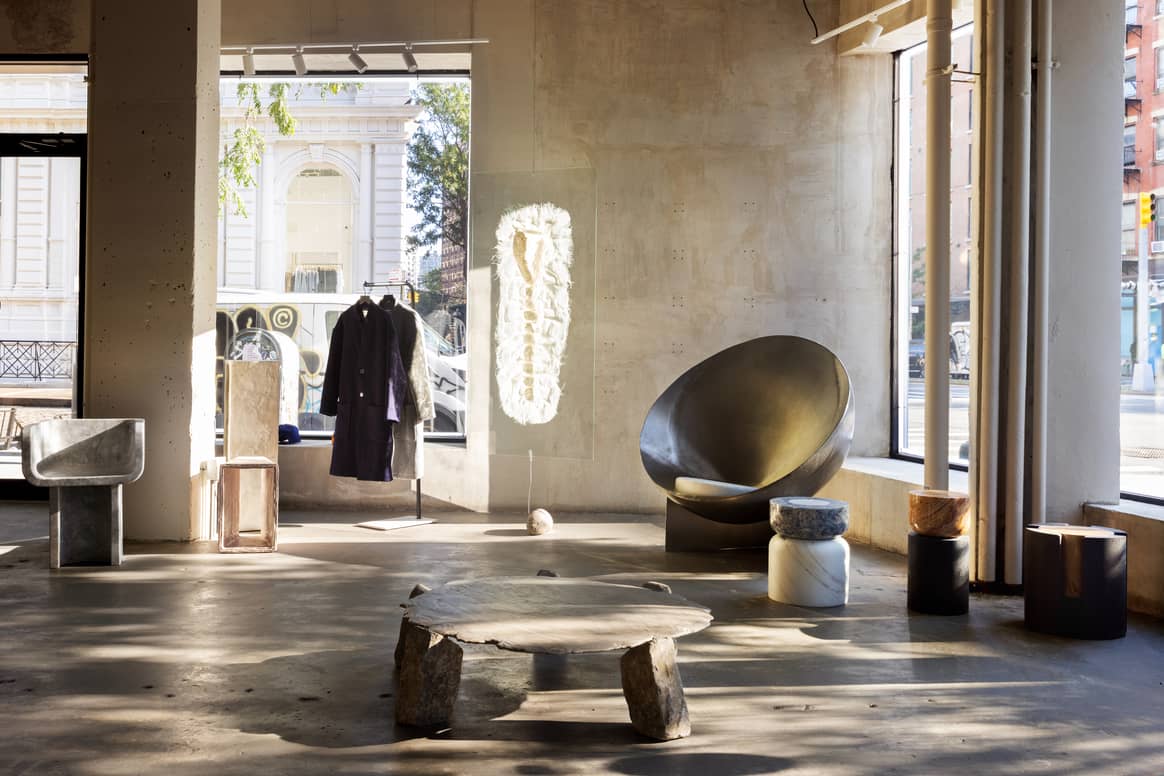Engaged in the clothing industry for 20 years.

Spotlight on Black independent retailers: Livewear curated by Áwet New York
There’s space in the fashion world for everyone. That includes independent retail. But what does it take to become an independent retailer? And what is it like to be a Black independent retailer, in an industry that hasn’t always been supportive of Black creatives?
There’s a lot we can learn from Black independent retailers regarding business, but also regarding how to create a community and loyal customer base by creating space and opportunity and supporting others. This series is dedicated to highlighting Black independent retailers’ stories, and learning why they do what they do.
For the first installment of this new series FashionUnited spoke with Alex St. Urbain, Chief Marketing Officer of Áwet New York. The brand has its own independent retail space called Livewear dedicated to showcasing BIPOC designers, artists, as well as furniture designers.
What sparked the idea to create Áwet and Livewear?
Alex St. Urbain: “The story of the brand started really in 2020. Áwet is the name of my co-founder Áwet Woldegebriel. It was during the Covid-19 pandemic and he was thinking about his father. Áwet’s father was a tailor and he was worried about how people like his father were doing during that time. He realized that people with businesses like his fathers might need support. So Áwet reached out to a third generation Greek family in the garment district in New York. And he agreed to produce one luxury item with them. Obviously it wasn’t going to save their business, but he said ‘it could get you guys through the next three months’. So that’s how the brand idea started. It was a simple black hoodie, made with really luxurious materials. In November 2020 we opened a pop up shop in Soho. The support we got there was really overwhelming, we sold out of that product. All the proceeds went back to this family that produced it. It reset the idea of the brand and it became clear that the brand was going to be community driven.”

“The luxury experience is key for us, and the design ethos of the brand is very clear, but the community aspect is really what’s taken us to where we are today. A few years later, we expanded our collection from the luxury hoodie and sweats to more ready-to-wear items. As we grew as a brand, we started to find our community focus. I know community is like the biggest buzzword every brand is trying to tap into but we really found that this is what it’s all about, for us, supporting other bipoc designers, like ourselves.”
“And so when we were opening our flagship, instead of doing a traditional, Áwet New York store, we wanted to use the space that we found to build something really unique. And it turned out to be a retail mix. We’re obviously the flagship brand in the store, but we also stock up to 10 other bipoc, primarily bipoc, designers in this space, as well as furniture and art. With Livewear we have created a community, a location for events and retail, that provides a luxury presence to Black owned and bipoc brands.”
How do you select featured products and brands?
“We want to create a uniform experience, making sure that the brands could sit next to ours at another retailer. We also offer the possibility where brands can apply directly on our website to be a part of Livewear. We take a look at their lookbooks, the price point should match and we make sure that there is enough inventory, in case something were to sell out. We also encourage our brands to have an event here. Customers love the fact that they can come and meet the founders and talk to the designers when they are here in person.”
Who is your audience and why?
“I would say we have a wide audience. Because we have different brands in the store, while they might all be at a luxury price point, there’s different looks and feels.
For our own brand, we know that we have a white demo, we tend to focus on ourselves. Áwet and myself are both in our early 30s. But although we sell in Saks Fifth Avenue, our clientele is different from the regular Saks customer and we have a different clientele for different boutiques. We’ve noticed there’s a wide range based on our offering, customers that buy our hoodies are different from our suiting customers. Having our own retail space really helps to learn and get to know our customer better. It’s like an ongoing learning process and a really attractive aspect of having an independent store.”

How so?
“What they’re buying, what they’re asking, their sizing. We found out we have to put more mannequins in the window, because we have such great foot traffic in this area. And it’s fascinating to see what goes on the mannequin, then sells directly afterwards.”
What sets you apart from other independent retailers?
“I think the mix of retail is an important aspect for us and that includes art and furniture. Successful retail needs to be original in some way. We have a third person that focuses on furniture and art pieces, he’s an interior designer based out of Mexico, his name is Jose Esperon. Jose is the creative director of the retail space. He designs the space and curates the art and furniture. He brings very unique pieces that are only really seen in showrooms and sit here next to our collection. We feature furniture from designers from all over the world. Our clothing collection changes almost every month. So even people that walk by frequently will see something new every time. It’s been really great to speak with people and talk about what they are looking for when they visit a shop. I think that’s the one big thing that sets us apart from other retail stores.”

“Áwet and myself, we’re here in the store all the time and we’re very hands on. We encourage our designers to stop by a few times a week and speak to customers. When people are discovering new brands, they want to feel a connection to it. Everyone loves the discovery of how they found a brand that they love. So we’re very keen on making sure we’re there, make sure there are a lot of touch points with us, make sure we’re coming up with events, so that people can really be a part of something.”
How long do you keep a brand in your store? Is there a time limit?
“It depends. The minimum is a month. And we can have a conversation with the designer, see if it makes sense to continue the partnership. But it really depends on the season. Some seasons are more packed than others. So I’d say probably around two months is probably average.”
Do you guys plan to expand?
“We opened the current store in September 2023, and we’ll be here for the rest of the year for sure until our lease ends. After that, it remains to be seen. We’re in discussions on what’s the best next step right now.”
How do you keep your audience and your customers engaged?
“Our programming. After about six months, we started to be known in the neighborhood. People started to come back and ask ‘Alex, what’s new?’ which is nice to hear. But it’s really programming and new brands coming in, they do their own social- and email marketing, announcing that they’re in store. So it’s the brand rotation that keeps the customer base engaged and continuously brings in new customers.”
How do you feel about the location? Does it help with foot traffic?
“It’s always a balancing act. If we were in Soho, like Prince Street or Broadway, there’s more foot traffic there. But I think customers here are looking for new brands, they’re window shopping, looking for something new. So on the busier retail days, like on weekends, we have a lot of people who don’t know us when they walk in. They come in, ask questions, engage and shop. I think this is a great location, it’s a corner location; the Bond street address is great for luxury. So we’re really happy with the space.”
Tell me about your partnership with UPS.
“We already started this mission of supporting BIPOC designers back in September. But when UPS came on in January of this year, that really accelerated and allowed us to impact more brands, and they’re able to come in and sell their products in the store at no cost to them.”

“UPS helps fund the cost of what a brand would pay to be in retail to allow them to really have a space to sell and get those profits back to them. We really wanted to make sure that when we were partnering with them there was a real tangible benefit for the small businesses.”
What are the benefits of being an independent retailer?
“Having the ability to experiment and change things. Larger retailers, or any large corporation, have rules of operations and steps and approvals to get things done. But on our end, we’re able to be very flexible, come up with new ideas for events and concepts, and launch them immediately. And really create what we want to see in retail, which we’re having a lot of fun doing.”
What are you most proud of regarding your business?
“I think from a retail perspective, I find it really rewarding to see that as we grow, see other brands grow with us. Because at such an early stage of a brand’s development it’s not usual to also be able to help others. Everyone understands how it’s really tough in the beginning, but I think we have really always had the mentality that there’s enough sunshine for all of us. So we find that as we support and collaborate, it does help us. And it’s in such a natural and communal way that it’s really how we do our day to day life.”
“So for me, the most rewarding thing is to see a brand that’s in Los Angeles and doesn’t really have any footprint on the East coast, is able to have a place to sell their pieces, connect with new customers, and grow their business in New York. We also do showrooms here during fashion weeks where buyers come in and appointments are made. Turning our space into a kind of an ecosystem. Customers or a new brand that are ready for the next step are able to grow here and connect here and become lasting friends.”

What are some disadvantages of being an independent retailer?
“I think sometimes people can be used to certain shops and those are the shops that they know, those shops they’ve been shopping at for years and years. And unless they come into the store, it’s hard to explain the experience. So there’s a learning curve to being an independent retailer that you need to be aware of. Before customers can appreciate you, they need to experience it. But more people want to experience in person shopping so we’re able to overcome some of those obstacles rather quickly.”
What has been your biggest challenge?
“It takes a lot of time to run a store properly, and run very smoothly. And on top of our direct to consumer business we also have our wholesale business that we’re growing. So it just takes a lot of time, which we are happy to do and, of course, it’s important to focus on. But it’s you having a baby, and you have to watch this baby grow and make sure everything’s taken care of.”
What is the most important thing people should know about your business?
“That we are really focused on building a brand that thinks of others, or thinks about each other. So while we invest a lot of time into our fabric development, and our soft tailoring design ethos, I think people want brands that care. And I think every brand has their own ethos on finding what that is. But we’ve been able to focus it on supporting other brands like ourselves, which is why we built Livewear.”
“Livewear was a term that we trademarked to mean those pieces that when you’re wearing them, you don’t want to take them off. When you’re not wearing them, they’re all you’re thinking about. Pieces that you could live your life in no matter where that takes you. So that’s why developing Livewear, the store concept, was a very natural evolution for us. So yeah, I think community first shopping experiences, is where the industry should be headed. And to do it in an authentic way is what we really strive to do.”
Do you have any advice for those who want to be independent retailers?
“It’s important to really figure out what your differentiator is. Because customers are looking for a great retail experience based on your location and based on who your clientele is. I think it’s important to find a uniqueness that gets people excited to come back and gets people talking. And you want them to recommend the shopping experience to someone else.”



